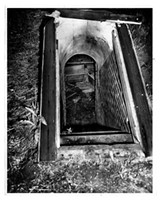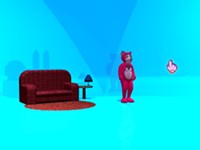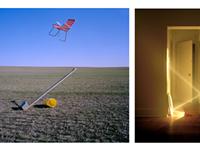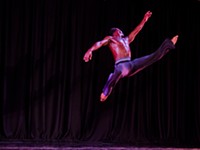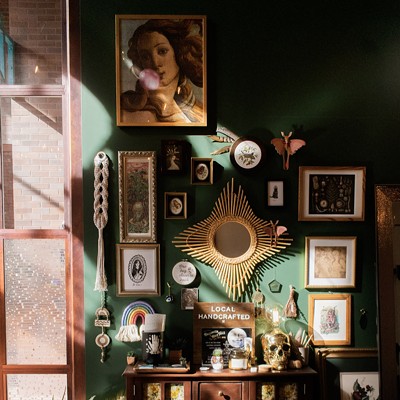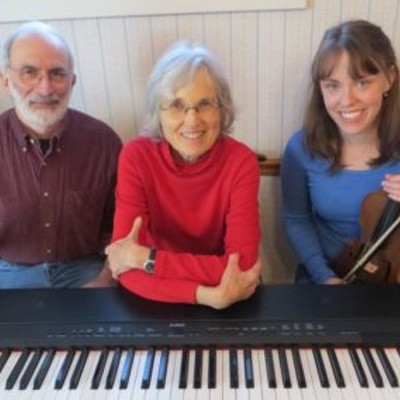[
{
"name": "500x250 Ad",
"insertPoint": "5",
"component": "15667920",
"parentWrapperClass": "",
"requiredCountToDisplay": "1"
}
]
Without the few wall-mounted paragraphs, which provide minimal information about each of the artists and their corresponding projects featured in the show, the current exhibit at Visual Studies Workshop would merely be a collection of baffling pictures unattached to meaning, an almost alien encounter. "Of the Ordinary" is made up of photographic imagery, largely unshackled from its own contexts; images never intended to be experienced in the context of a gallery. Here, seven contemporary archivist-artists blur and transgress the boundaries of public and private, revealing what was once hidden and concealing what was seemingly plain.
Stripped of most contexts, these appropriated images raise that persistent question of whether a photograph can accurately represent reality — much less convey an accurate story — without a linguistic explanation of the circumstances.
The only images in the show that retain their own context are found in Alyse Emdur's "Prison Landscapes," which represent some of Emdur's documentation of backdrops used for pop-up portrait studios for prisoners and their visitors. In one photograph, we seem to be peering through manor walls to a sunny pond scene, with a stone-domed and -pillared gazebo on an outcropping of green land.
An actual backdrop is present in the gallery: a mammoth painting of a waterfall and woods, signed "Van '10," which may be a prisoner's signature, as they are sometimes the ones to paint these backdrops and other murals in the common areas. Another photo features an armored knight on horseback in a checker-floored court, pointing a lance at the viewer. I found myself comparing them to the equally cheesy, fanciful backdrops used for family portraits at mall photo studios, where mundane reality is replaced with grasps at dramatic nature or absurd fantasy.
Emdur framed her portraits of the backdrops with their surroundings: the cold linoleum, cinder blocks, barred windows, and harsh lighting of the true prison environment. In any actual portraits taken with these backdrops, there would be no traces of the context; here, they are revealed. I wonder if any prisoners shun the fantasy, and request the bare rooms for a backdrop. If so, are they granted their request? The use of these backdrops belies a strange covenant created between prisoner and prison to deliberately obscure the environment of the facility.
Ofer Wolberger's larger-than-life scans of books hail from his "Photographic Book Project," in which he explores injuries as well as casts and other apparatuses used to support the human body as it recovers from trauma. With only titles and a few stamped images on the five jacket-less, cloth-bound book covers, we must make our own associations regarding the frayed edges of these overlooked surfaces, now intimately naked and nuanced.
I found Adam Broomberg and Oliver Chanarin's "People in Trouble, Laughing, Pushed to the Ground," to be among the most tricky to tackle. The duo drew the images in this series from The Belfast Exposed Archive, which was founded in 1983 "as a response to the concern over the careful control of images depicting British military activity in the 1970's and 80's in Belfast, Ireland," per the provided information.
Once included in the archive, circular stickers were placed over faces, hands raised at a rally, a swarm of balloons, and a vehicle spurting flames. Present here are the circular images that were formerly blocked off, but removed from context of the greater image, their significance remains in obscurity. The archivists know more than we do, but they aren't talking.
Similarly, Ron Jude's archive of context-less images teases and baffles. The shots are drawn from the Alpine Star, a local newspaper in central Idaho, but without the accompanying stories, the history of a community is reduced to ordinary images, hinting at silliness and dire situations, or entirely impenetrable. The urge to scratch the itch of piecing back together the meanings behind Broomberg/Chanarin and Jude's image collections is at first greater than the desire to examine how the images stand alone, or what story they may collectively tell.
In the winter of 1958, Charles Starkweather and 14-year-old Caril Ann Fugate murdered 10 people, including Fugate's family, over a three-day period across the state of Nebraska. This is the tragic series of events that inspired Christian Patterson's "Redheaded Peckerwood" project and book of the same name.
Patterson's archive reads like a deliberate dream state, like walking through the fragmented memories of the incidents themselves, held captive in photographic evidence sourced from the case file, or recreated in scenes staged by Patterson, and in images of pure allusion, pointing toward the places the story guided the artist's imagination. But Patterson stops short of specifying which are which, though some are easier to detect than others.
"I'm interested in history, and whether it can poke through to the present," Patterson said in an interview with City earlier this month. He says he feels the life contained within the images and objects he's collected, "charged with the lingering presence" of the events.
Though many of the images in the show are quite engaging, a centrally situated, glass-topped case of packages and envelopes tugs at the viewer's attention like a black hole. Jason Lazarus put out a call for people to send him images that are "Too Hard to Keep" for a project of the same name. After the exhibition, the packages will travel to Chicago, where they will be opened, sorted, and filed among the thousands of others that have amassed over the past three years.
I wonder about this small anti-exhibit, still sealed within these few parcels, silently waiting to join a new family of condemned memories. What has been given up, sliced voluntarily from its origins, and why? Do the packages contain letters, explaining stories behind the photographs? It is easy to see how such a project could take on the nature of a confessional. One image used to advertize this opportunity to part with pain is of a seemingly battered young woman with deep bruises, with steely wariness in her blackened eyes. It is not likely that all of the submitted images will be as extreme, as dramatic. Some will seem mundane, yet bear the burden of private significance.
Speaking of...
Latest in Art
More by Rebecca Rafferty
-

Beyond folklore
Apr 4, 2024 -

Partnership perks: Public Provisions @ Flour City Bread
Feb 24, 2024 -

Raison d’Art
Feb 19, 2024 - More »
